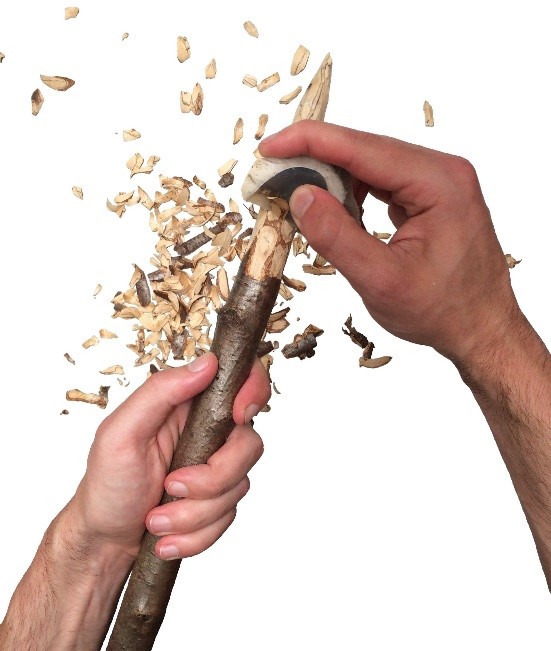Research published this week by the School of Anthropology and Conservation’s Experimental Archaeologist Dr Alastair Key reveals that the stone tools used by our early ancestors were likely to have had unexpectedly short functional lives.
Published in the Journal of Archaeological Science, the study details the significant impact that minor blunting can have on a Palaeolithic stone tool’s performance and the behavioural responses that early humans would have performed in reaction to these rapid reductions in cutting efficiency.
Stone tools have been important to the survival and success of human populations for over 2.6 million years, having been regularly used to access food resources and produce various types of clothing and technologies. The importance of stone tools, however, also means there would have been strong selective pressures for individuals to use stone tools that were highly efficient and effective.
Using techniques established within engineering research, the interdisciplinary research team that also included Archaeologist Dr Metin Eren and Engineer Dr Michael Fisch from Kent State University, were able to demonstrate that a single blunting event on a stone tool’s edge, such as when accidentally cutting bone during the butchery of an animal, could increase the force required to effectively cut with that tool by 38%. In energetic terms, tool users would have to expend 70% more energy when using a stone tool after a single blunting action. The rapid rate at which energy and force requirements increase in the very earliest stages of blunting is substantially higher than previous estimates. These reductions in performance could have had substantial implications for Palaeolithic populations, increasing the time, energy and biomechanical stress required to use a tool.
Dr Key’s findings suggest that Palaeolithic populations would have been under strong pressure to either resharpen or discard their stone implements after relatively brief periods of use. This would have led to a high turnover of stone tool implements during the Palaeolithic and, in turn, would have influenced the frequency and formation of stone tools discovered in the archaeological record. These results, therefore, provide a revised theoretical framework for understanding how human populations managed stone tool production, use and replacement through the >2.6 million years of the Palaeolithic.
Full citation: Key, A., Fisch, M.R., and Eren, M.I. 2018. Early stage blunting causes rapid reductions in stone tool performance. Journal of Archaeological Science 91: 1-11
The research was supported by a British Academy Postdoctoral Fellowship awarded to Dr Key.

